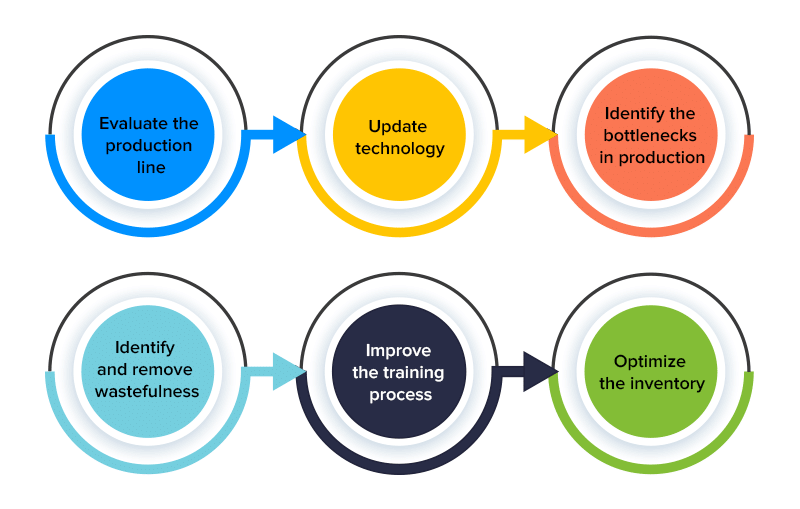Factory Improvement Ideas 2025: Driving Efficiency and Competitiveness
Related Articles: Factory Improvement Ideas 2025: Driving Efficiency and Competitiveness
- Abstract Ideas: A Comprehensive Exploration With Examples For 2025
- Breakfast Ideas With Eggs And Biscuits 2025: A Culinary Odyssey
- Best Discord About Me Ideas For 2025: Elevate Your Profile With Creative Expression
- App Icon Design Ideas For 2025: Shaping The Future Of Mobile Experiences
- Easy And Fast Dinner Ideas With Rice For 2025
Introduction
With enthusiasm, let’s navigate through the intriguing topic related to Factory Improvement Ideas 2025: Driving Efficiency and Competitiveness. Let’s weave interesting information and offer fresh perspectives to the readers.
Table of Content
Video about Factory Improvement Ideas 2025: Driving Efficiency and Competitiveness
Factory Improvement Ideas 2025: Driving Efficiency and Competitiveness

Introduction
In the rapidly evolving industrial landscape, manufacturers face relentless pressure to improve efficiency, reduce costs, and maintain a competitive edge. As we approach 2025, it is imperative for factories to embrace innovative ideas and strategies to optimize their operations. This article presents a comprehensive overview of factory improvement ideas that can propel businesses towards success in the coming years.
1. Data-Driven Decision-Making
Data analytics plays a pivotal role in empowering factories with actionable insights. By leveraging real-time data from sensors, machines, and production systems, manufacturers can gain a granular understanding of their operations. This data can be used to identify bottlenecks, optimize processes, and make informed decisions that drive efficiency and productivity.
2. Automation and Robotics
Automation and robotics offer immense potential for enhancing factory productivity and reducing human error. Automated machines can perform repetitive tasks with precision and speed, freeing up workers for more value-added activities. Robots can also be deployed for hazardous or physically demanding tasks, improving safety and reducing the risk of injuries.
3. Lean Manufacturing Principles
Lean manufacturing focuses on eliminating waste and improving efficiency throughout the production process. By implementing principles such as Just-in-Time (JIT) production, value stream mapping, and Kanban, factories can reduce inventory levels, minimize downtime, and streamline operations.
4. Predictive Maintenance
Predictive maintenance involves using sensors and data analytics to monitor equipment health and predict potential failures. By identifying issues early on, factories can schedule maintenance proactively, preventing costly breakdowns and unplanned downtime. This approach enhances equipment uptime, reduces maintenance costs, and improves overall operational efficiency.
5. Digital Twins
Digital twins are virtual replicas of physical assets or processes. They enable manufacturers to simulate and optimize production scenarios before implementing them in the real world. Digital twins can be used to test new equipment, optimize layouts, and identify potential bottlenecks, reducing the risk of costly errors and improving overall efficiency.
6. Cloud Computing and Edge Computing
Cloud computing provides manufacturers with access to scalable and flexible computing resources. By leveraging cloud-based platforms, factories can store and analyze large volumes of data, run complex simulations, and deploy advanced applications without investing in costly on-premises infrastructure. Edge computing, which involves processing data closer to the source, can further enhance real-time decision-making and improve operational agility.
7. Artificial Intelligence (AI)
AI algorithms can automate complex tasks, enhance decision-making, and optimize production processes. AI-powered systems can analyze data, identify patterns, and make predictions, enabling factories to improve scheduling, inventory management, and quality control.
8. Smart Factories
Smart factories integrate various technologies, including automation, robotics, data analytics, and AI, to create a highly interconnected and intelligent production environment. Smart factories enable real-time monitoring, automated decision-making, and optimized production processes, leading to increased efficiency, reduced costs, and improved product quality.
9. Workforce Training and Development
Investing in workforce training and development is essential to ensure that factory employees possess the skills and knowledge required to operate advanced technologies and implement new processes. Training programs can focus on areas such as automation, data analytics, and lean manufacturing principles, empowering workers to contribute effectively to the factory’s success.
10. Collaboration and Partnerships
Collaboration between manufacturers, suppliers, and technology providers can accelerate innovation and drive factory improvement. By working together, organizations can share best practices, explore new technologies, and develop innovative solutions that address specific industry challenges.
Conclusion
As we approach 2025, factories must embrace innovative ideas and strategies to thrive in the competitive global market. By leveraging data analytics, automation, lean manufacturing principles, predictive maintenance, digital twins, cloud computing, AI, smart factories, workforce training, and collaboration, manufacturers can unlock significant efficiency gains, reduce costs, and enhance their competitiveness. By implementing these factory improvement ideas, businesses can position themselves for success in the years to come and continue to drive the future of manufacturing.
![[IMGSRCTITLE2]](https://www.dozuki.com/hs-fs/hubfs/Imported_Blog_Media/Improve%20Quality%20Control%20in%20Manufacturing%20-%20infographic.jpeg?width=6485u0026name=Improve%20Quality%20Control%20in%20Manufacturing%20-%20infographic.jpeg)
![[IMGSRCTITLE3]](https://uploads-ssl.webflow.com/60edc0a8835d5b38bf11f03f/62eb787e0d7355b88da61835_Ways%20to%20Improve%20Efficiency%20of%20Manufacturing%20Plant.jpeg)
![[IMGSRCTITLE4]](https://www.cmc-consultants.com/hs-fs/hubfs/Blog%20Post%20Images/07-2020/Blog%20Featured%20Image%20-%207%20Factory%20Improvement%20Ideas.jpg?width=12u0026name=Blog%20Featured%20Image%20-%207%20Factory%20Improvement%20Ideas.jpg)
![[IMGTITLE5]](https://www.hashmicro.com/blog/wp-content/uploads/2018/10/infographic.jpg)
![[IMGTITLE6]](https://proqc.com/blog/wp-content/uploads/2021/01/Improving-quality-management-in-manufacturing2-1-e1610456864284.jpg)
![[IMGTITLE7]](https://www.br-automation.com/fileadmin/1532034768180-en-html-1.0.jpg)
![[IMGTITLE8]](https://blog.rheincs.com/wp-content/uploads/infographic-2-1024x536.png)
![[IMGTITLE9]](https://corningdata.com/wp-content/uploads/2020/07/improve-productivity-efficiency-manufacturing.png)
Closure
Thus, we hope this article has provided valuable insights into Factory Improvement Ideas 2025: Driving Efficiency and Competitiveness. We appreciate your attention to our article. See you in our next article!